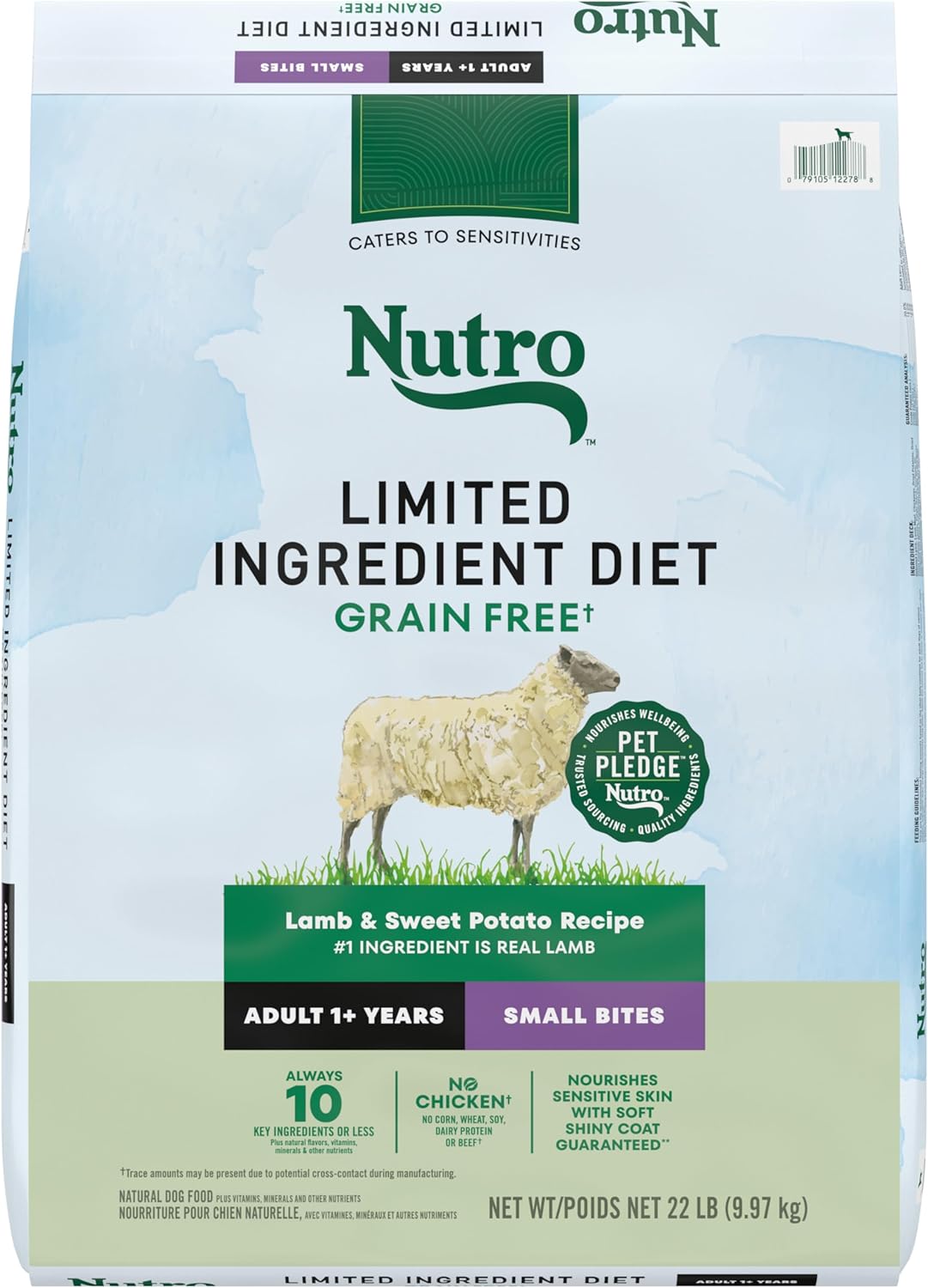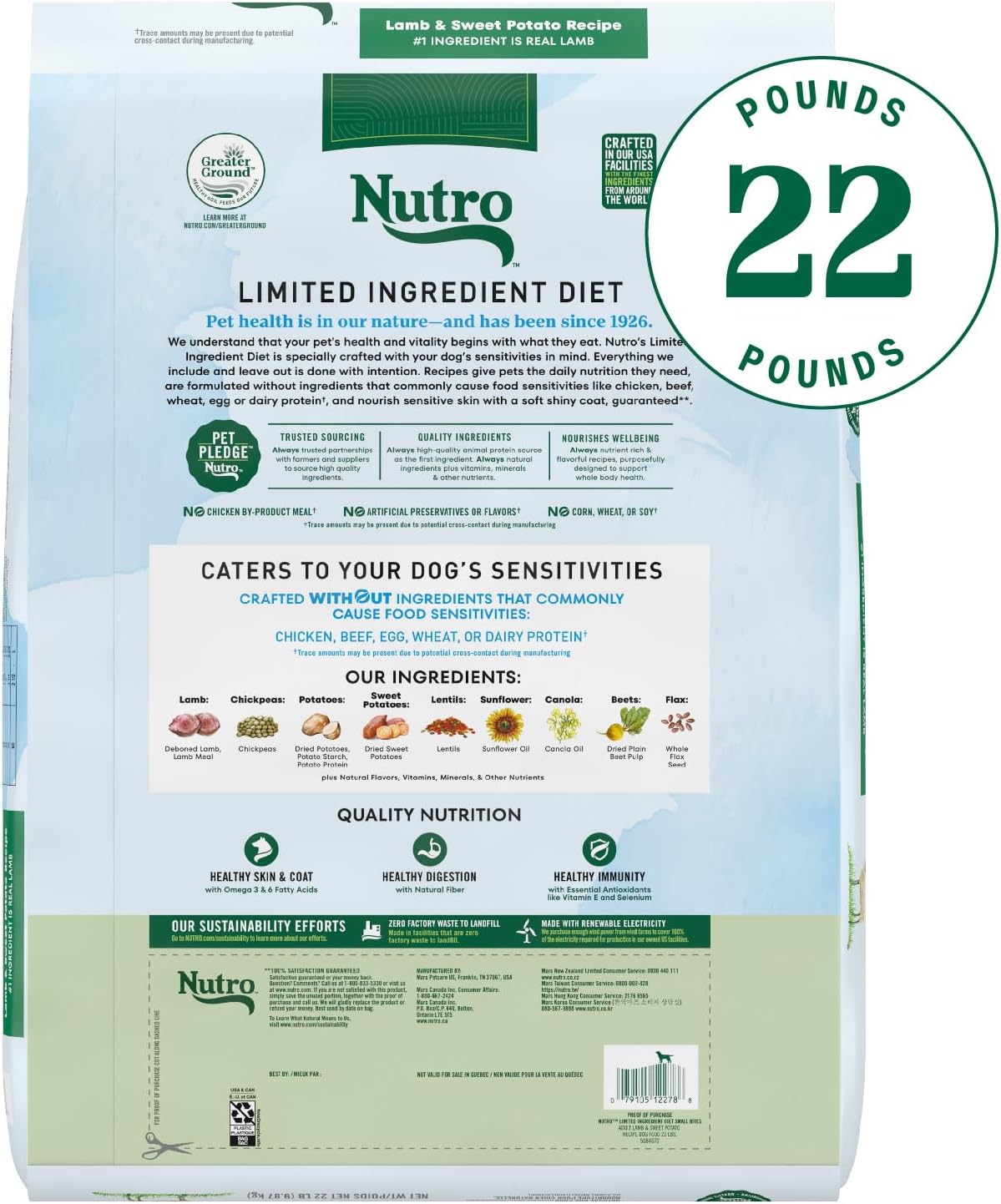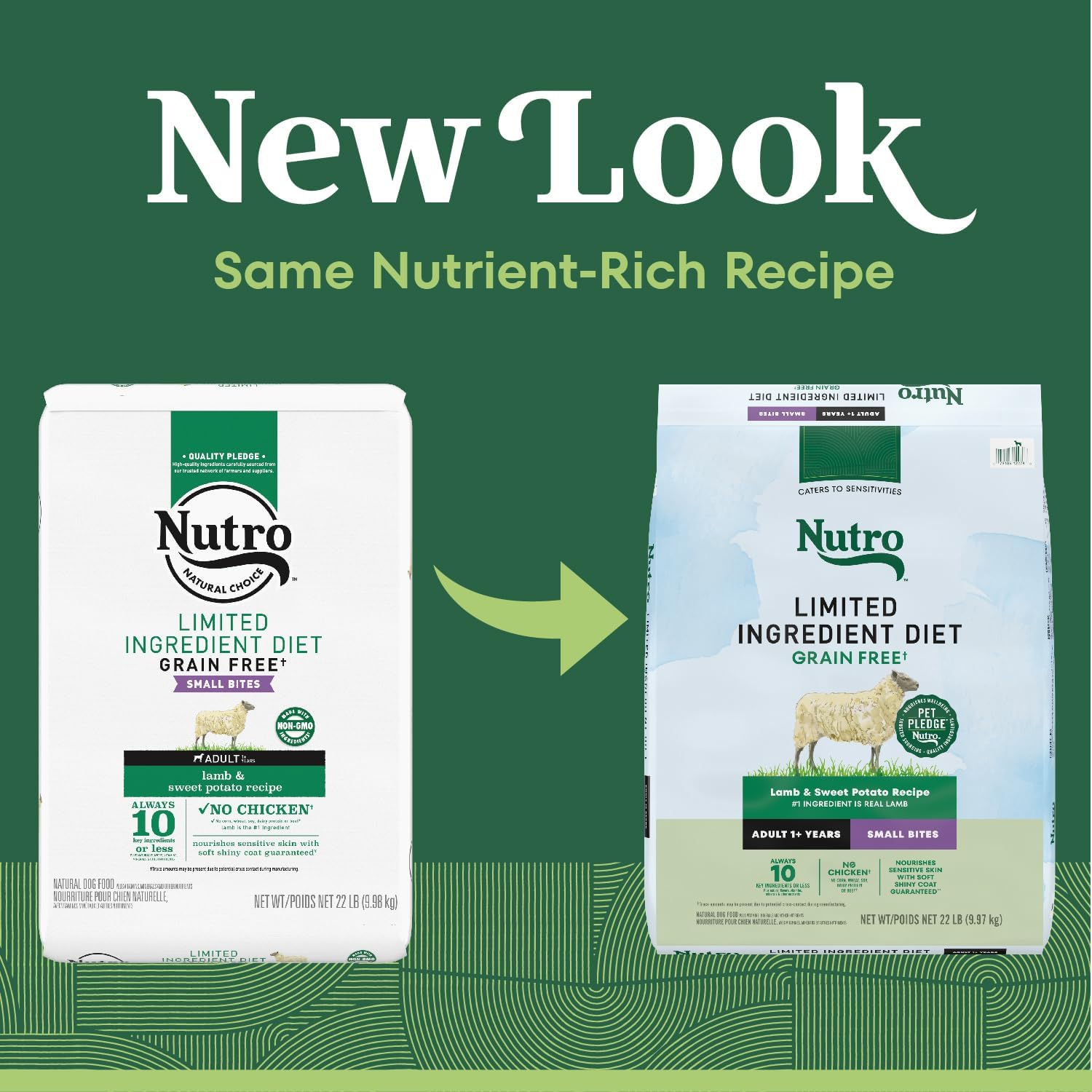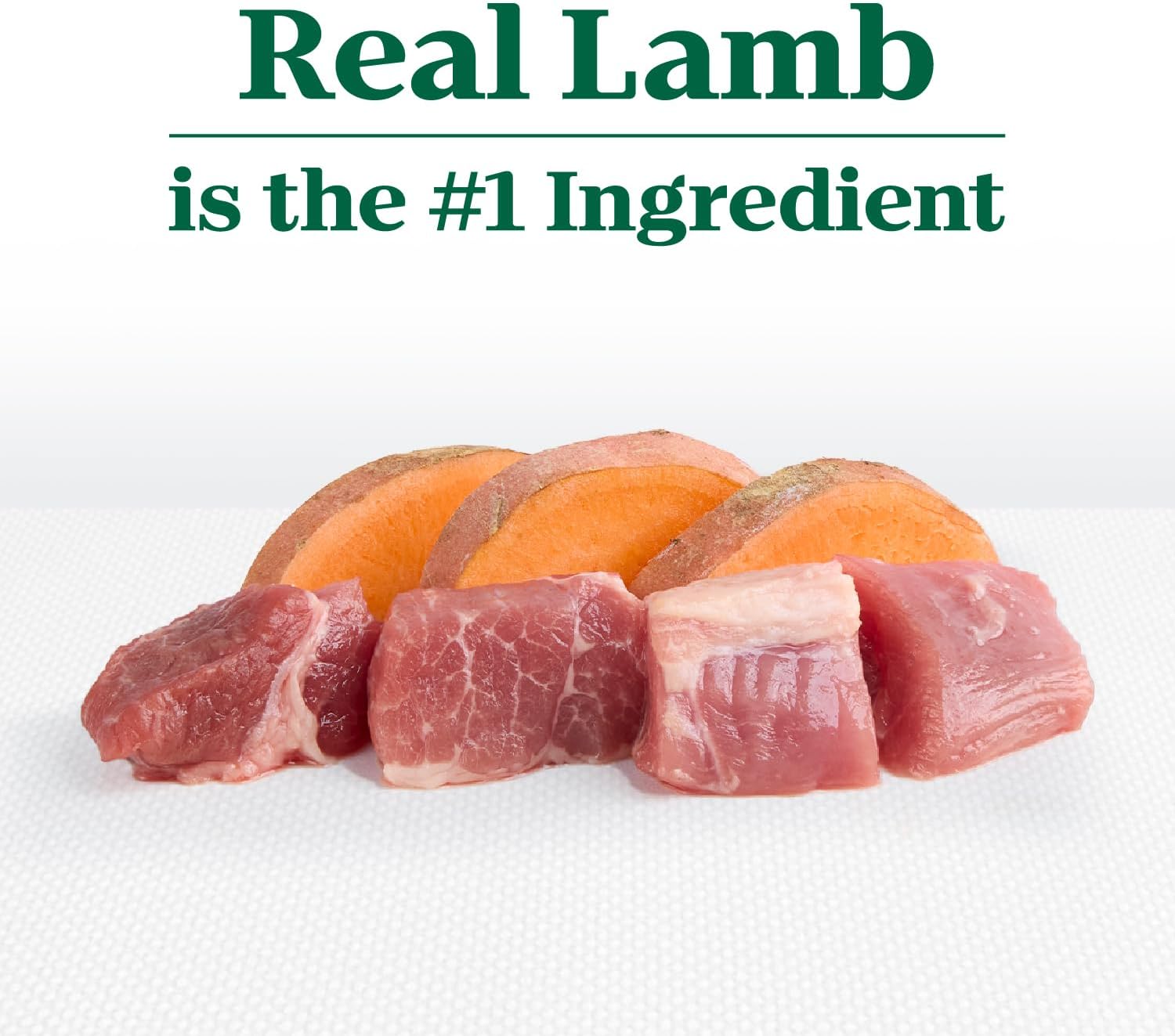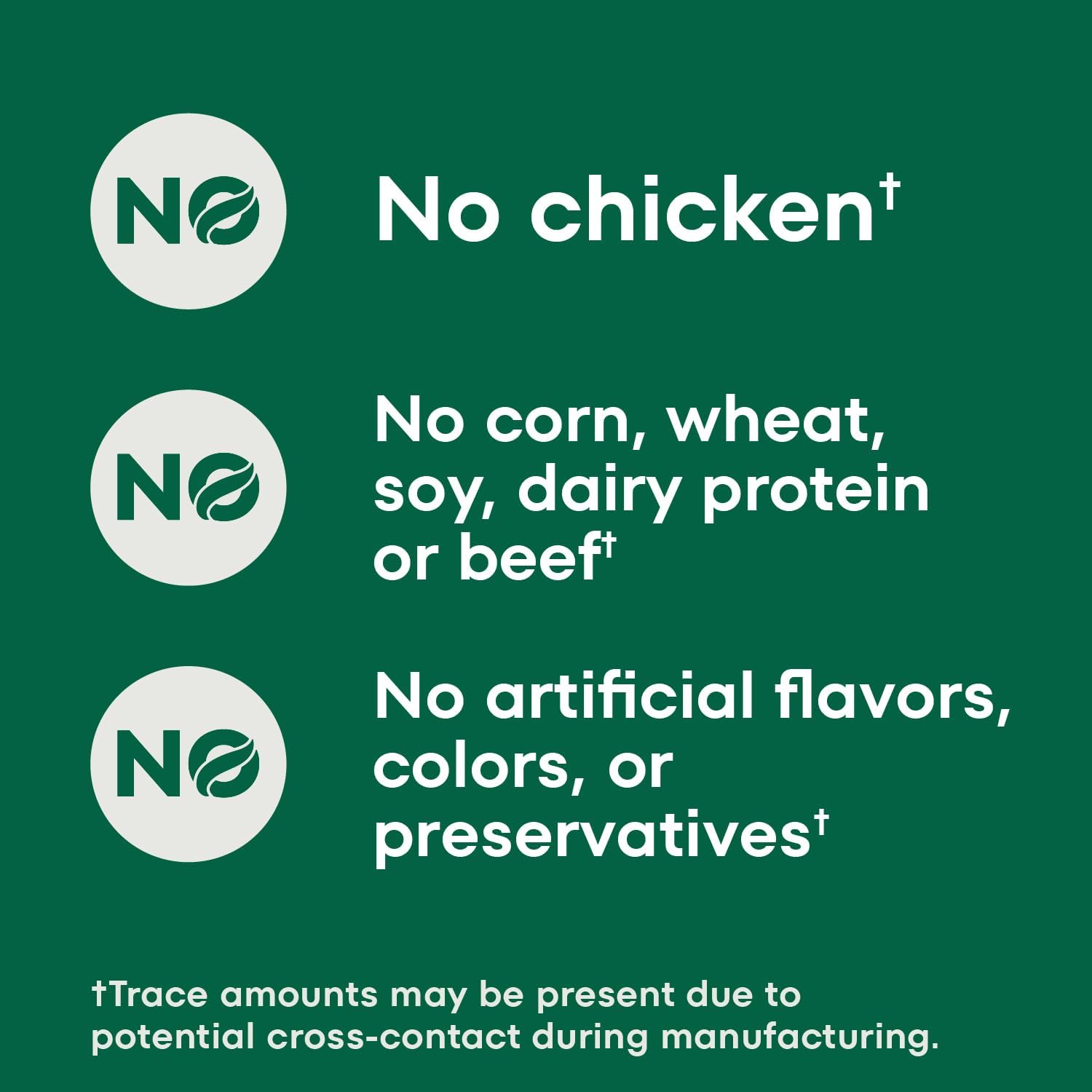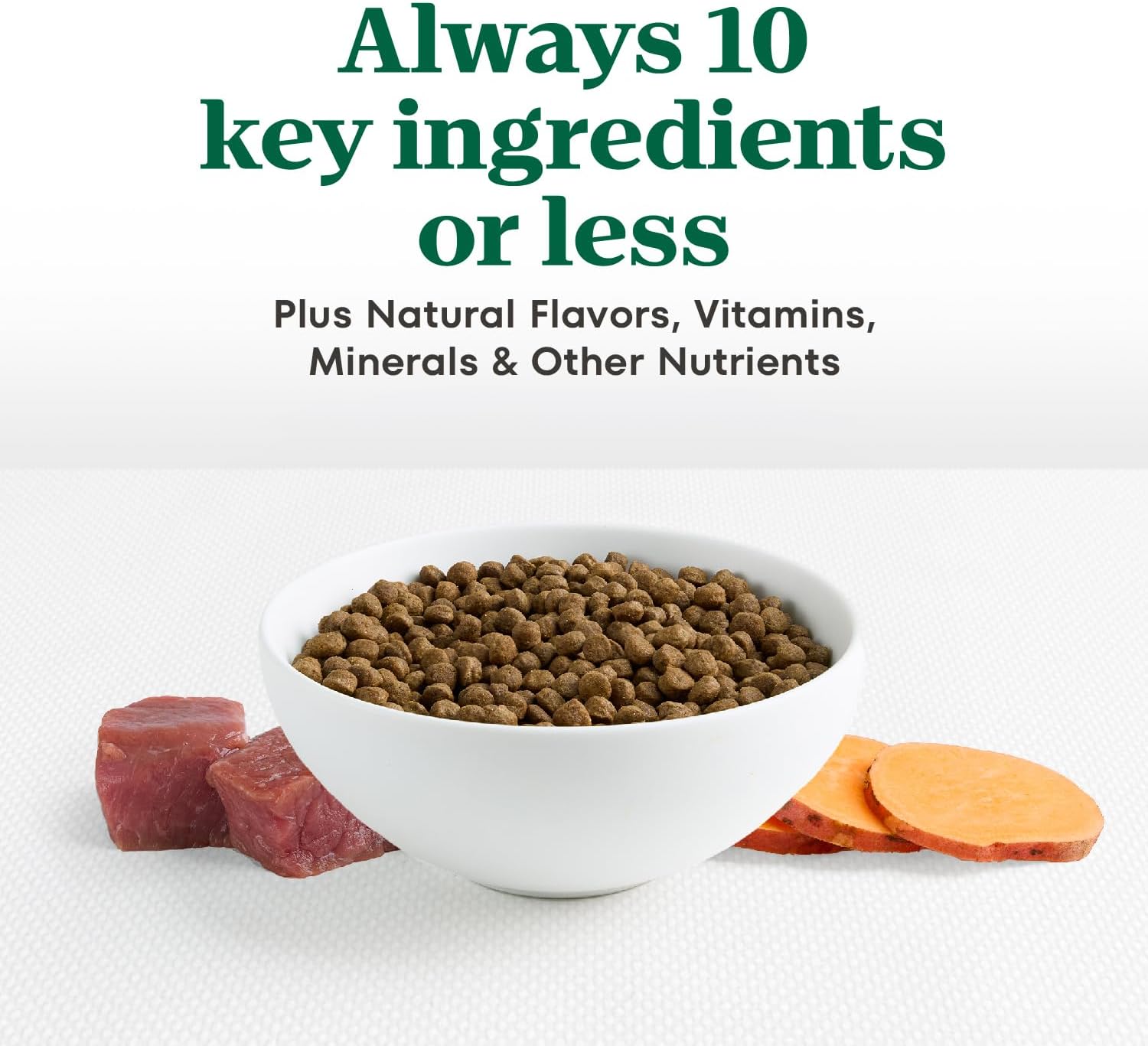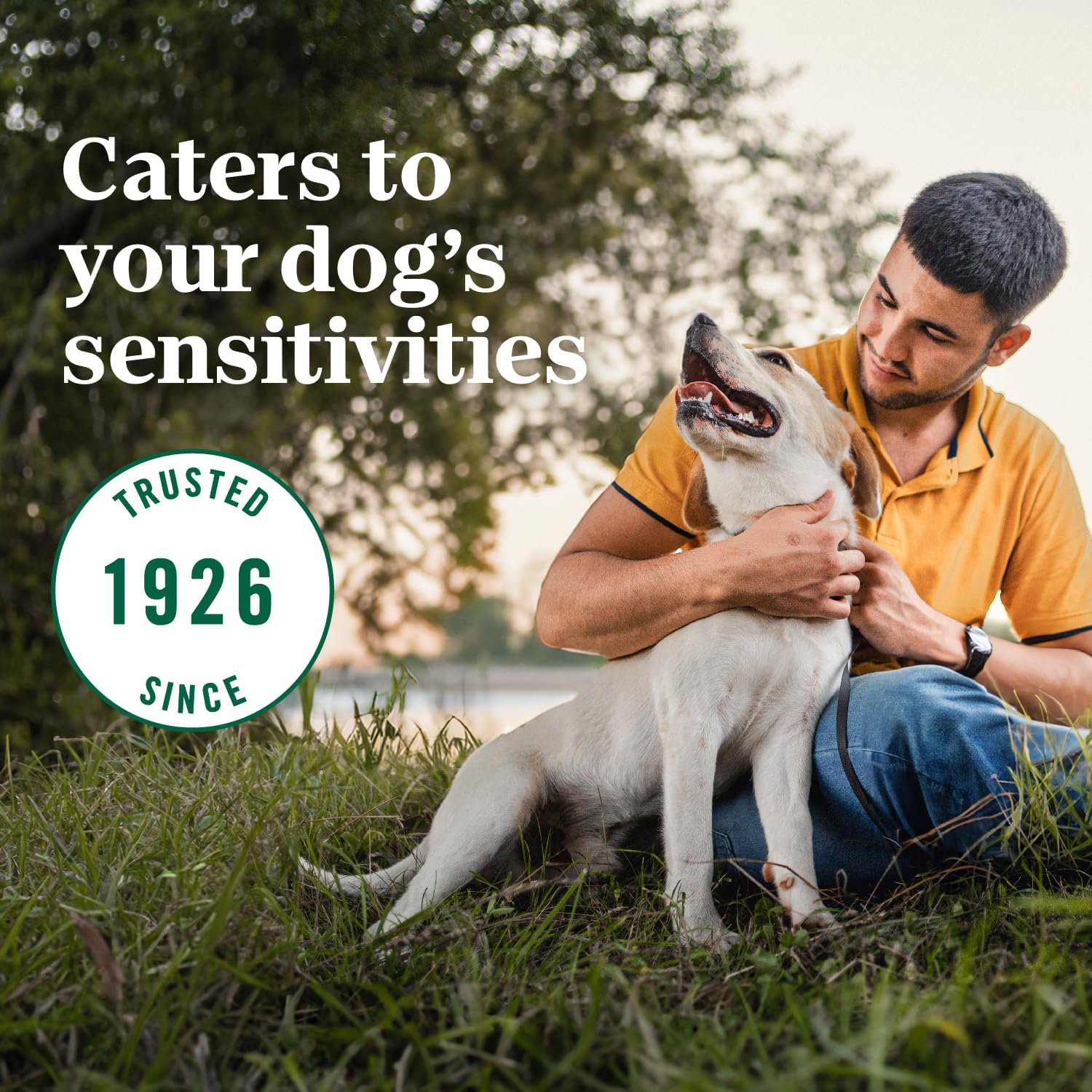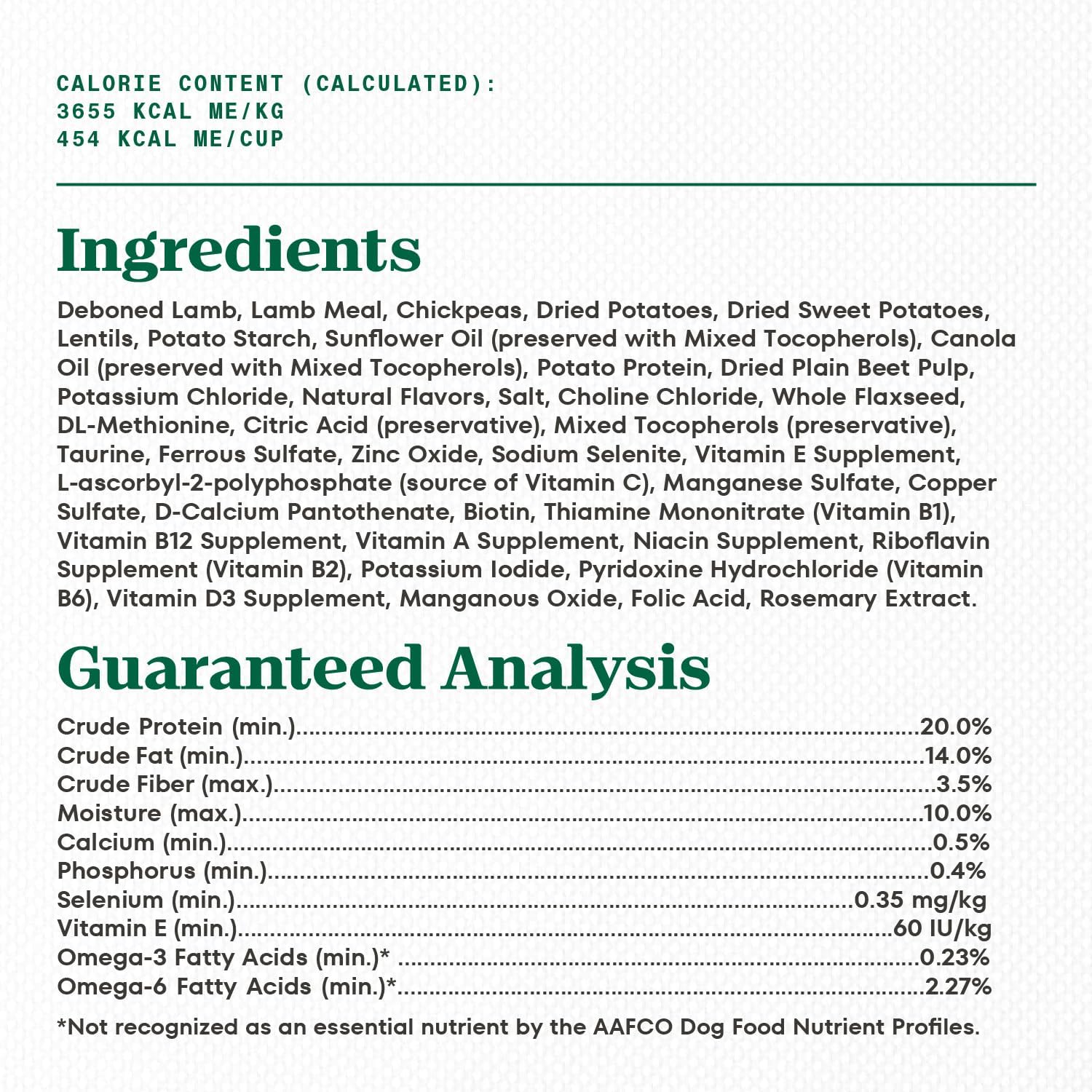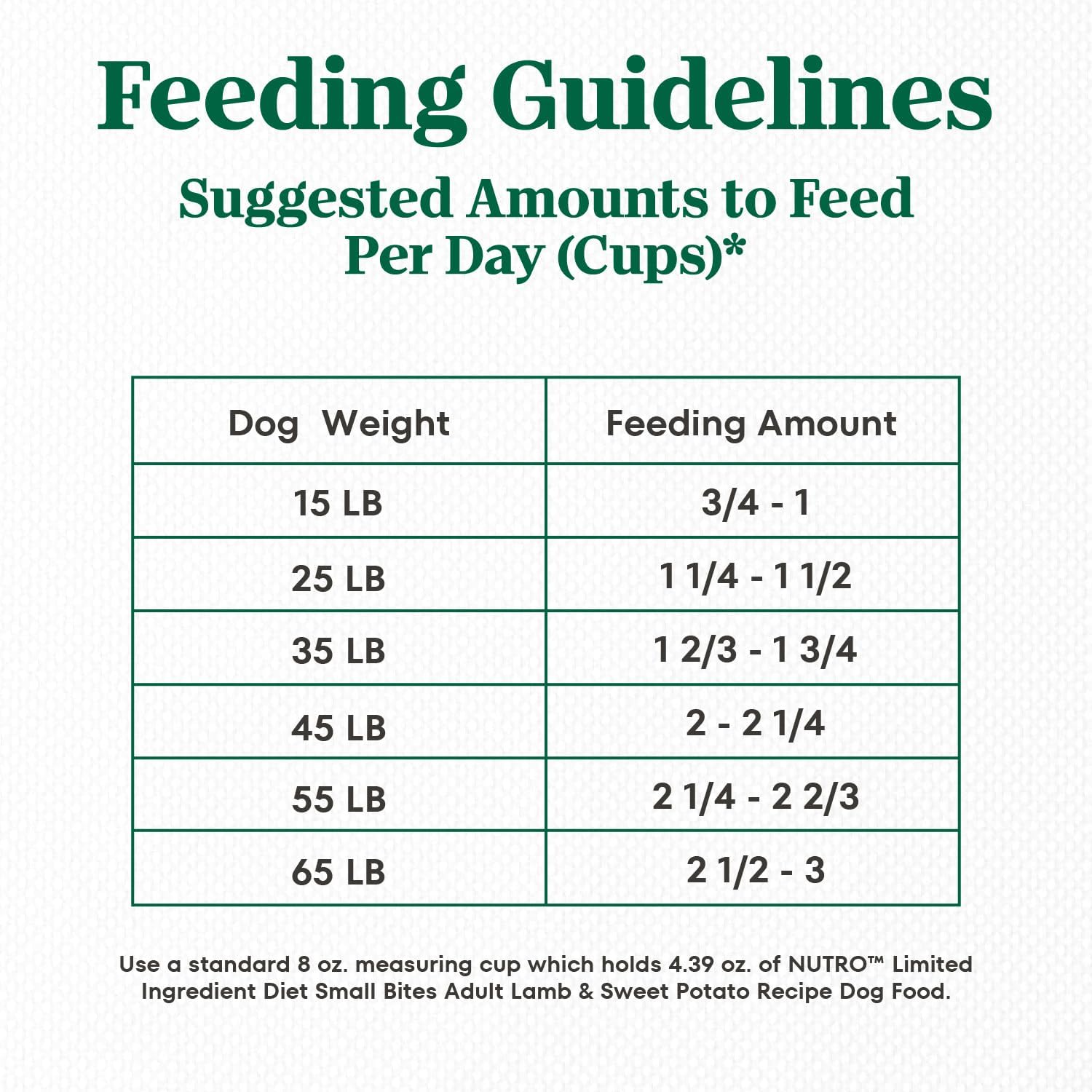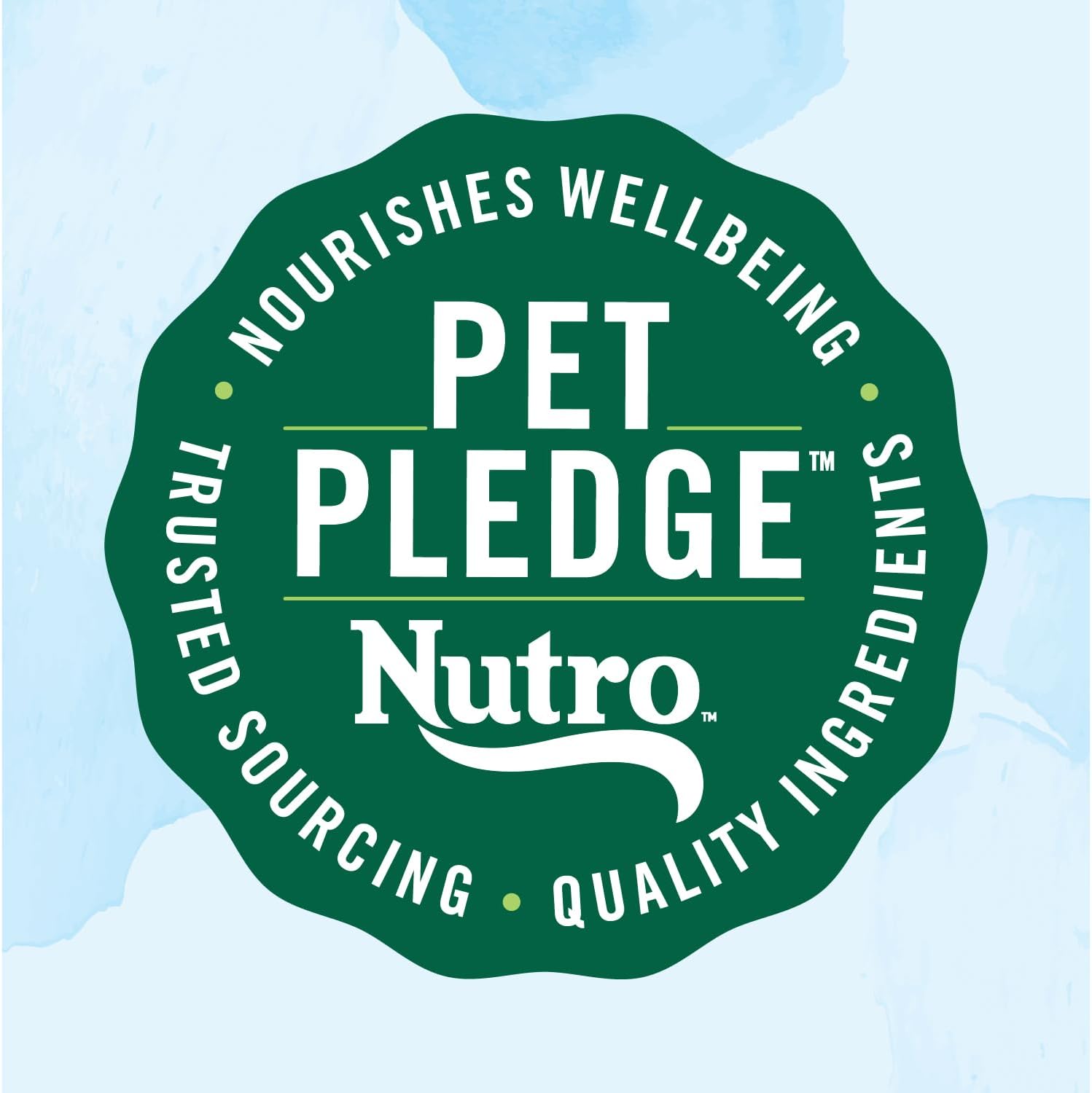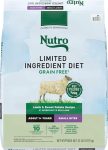
Nutro Limited Ingredient Diet Small Review nutro dog food Buying Guide – Oemiu
Nutro Limited Ingredient Diet Small Breed: A Comprehensive Review and Buying Guide
Navigating the world of dog food can feel like traversing a minefield, especially when you have a small breed dog with sensitivities or allergies. The sheer volume of options, coupled with conflicting marketing claims, often leaves pet owners feeling overwhelmed and uncertain. If you’re seeking a diet that prioritizes simplicity, digestibility, and high-quality ingredients for your pint-sized companion, then Nutro Limited Ingredient Diet Small Breed dog food might be a brand worth exploring. This article delves deep into Nutro’s limited ingredient offerings for small dogs, examining their formulations, ingredients, benefits, and potential drawbacks. We’ll also provide a comprehensive buying guide to help you make an informed decision about whether this diet is the right fit for your furry friend’s specific needs.
Understanding Limited Ingredient Diets for Small Breeds
The core concept behind limited ingredient diets (LIDs) is elegantly simple: minimize the number of ingredients to reduce the risk of triggering adverse food reactions. For small breed dogs, who often have more sensitive digestive systems and a higher propensity for allergies than their larger counterparts, this approach can be particularly beneficial. Common food allergens in dogs include beef, chicken, dairy, eggs, wheat, and soy. By eliminating these prevalent culprits and focusing on a select few easily digestible ingredients, LIDs aim to alleviate symptoms such as skin irritation, gastrointestinal upset, and ear infections. Nutro’s limited ingredient small breed formulas typically feature a single source of animal protein (like lamb or salmon), a limited number of carbohydrate sources (such as sweet potato or brown rice), and essential vitamins and minerals. This streamlined approach makes it easier to identify potential allergens and manage your dog’s dietary needs effectively. Beyond just allergen management, a high-quality limited ingredient diet for small breeds can promote better overall health, contributing to a shinier coat, improved energy levels, and a stronger immune system. But the effectiveness of any LID hinges on the quality of the ingredients and the specific needs of your dog, making careful consideration essential. Choosing the right protein source within the Nutro limited ingredient small breed selection can also be a key consideration. Different proteins can provide slightly varied benefits.
Think of it like this: imagine you’re cooking a complex stew with dozens of different ingredients. If you experience a reaction, pinpointing the exact cause would be incredibly difficult. Now, picture a simple soup with just a few components. If you have a reaction, it’s much easier to identify the offending ingredient. Limited ingredient diets for dogs operate on the same principle. By reducing the number of variables, you increase your chances of successfully managing your dog’s sensitivities. Many owners see significant improvement in their dog’s condition when switching to a limited ingredient diet. However, it’s crucial to consult with your veterinarian before making any drastic dietary changes. They can help you determine if a limited ingredient diet is truly necessary and provide guidance on selecting the most appropriate formula for your dog’s specific needs and health history. Remember that while “limited ingredient” sounds simple, the quality and sourcing of those limited ingredients matter immensely. Look for brands like Nutro that prioritize high-quality protein sources and avoid artificial additives, fillers, and preservatives. A dog suffering from chronic allergies may find significant relief with Nutro limited ingredient small breed diets.
A Closer Look at Nutro Limited Ingredient Diet Small Breed Formulas
Nutro offers several limited ingredient formulas specifically designed for small breed dogs, each featuring a unique protein source and carefully selected ingredients. Understanding the nuances of each formula is crucial for choosing the best option for your furry friend. Let’s delve into the common features and variations:
- Single Animal Protein Source: Each formula features a single, high-quality source of animal protein, such as lamb, salmon, or venison. This minimizes the risk of exposure to common protein allergens like chicken or beef.
- Limited Carbohydrate Sources: Instead of using grains like corn, wheat, or soy (which can be allergenic for some dogs), Nutro utilizes easily digestible carbohydrate sources like sweet potatoes, brown rice, or peas.
- Essential Nutrients: These formulas are carefully formulated to provide a complete and balanced diet, meeting all of your small breed dog’s nutritional needs, including essential vitamins, minerals, and antioxidants.
- No Artificial Additives: Nutro avoids artificial colors, flavors, and preservatives in their limited ingredient formulas, further reducing the risk of adverse reactions.
- Small Kibble Size: Recognizing the smaller mouths of small breed dogs, Nutro’s kibble is appropriately sized for easy chewing and digestion.
Now, let’s examine a few specific Nutro Limited Ingredient Diet Small Breed formulas:
| Formula | Primary Protein Source | Primary Carbohydrate Source | Key Features |
|---|---|---|---|
| Lamb & Sweet Potato Recipe | Lamb | Sweet Potato | Good for dogs with common protein sensitivities. Lamb is a novel protein for many dogs. |
| Salmon & Potato Recipe | Salmon | Potato | Rich in Omega-3 fatty acids for skin and coat health. Ideal for dogs with fish-based protein preferences. |
| Venison Meal & Sweet Potato Recipe | Venison Meal | Sweet Potato | A novel protein option, less common, making it a good choice for highly sensitive dogs. |
Choosing the right formula often comes down to trial and error, guided by your veterinarian’s recommendations. For instance, if your dog has shown sensitivity to chicken in the past, the Lamb & Sweet Potato or Salmon & Potato recipes would be more suitable starting points. The Venison Meal & Sweet Potato recipe is often recommended for dogs with multiple sensitivities, as venison is a less common protein source. Always monitor your dog closely when introducing a new food, looking for any signs of digestive upset or allergic reactions. A gradual transition, mixing the new food with the old over several days, can help minimize the risk of digestive issues. Remember that “natural” does not always mean hypoallergenic. While Nutro prioritizes natural ingredients, individual sensitivities can still occur. It’s also worth noting that while these formulas are designed for small breeds, portion control is still crucial to prevent weight gain. Small breed dogs are prone to obesity, which can exacerbate existing health problems. The feeding guidelines on the packaging should be considered as a starting point, and you may need to adjust the amount based on your dog’s activity level and individual needs. If you’re looking to ease your pet’s digestive issues, Nutro dog food is a valid choice.
Benefits and Potential Drawbacks of Nutro Limited Ingredient Diet Small Breed
Like any dog food, Nutro Limited Ingredient Diet Small Breed has its advantages and disadvantages. Weighing these factors carefully will help you determine if it’s the right choice for your dog. Let’s begin with the benefits:
- Allergy Management: The limited ingredient formulation can significantly reduce the risk of allergic reactions in sensitive dogs. This translates to fewer skin issues, less digestive upset, and improved overall comfort.
- Improved Digestion: Easily digestible ingredients like sweet potatoes and brown rice can promote better digestive health and nutrient absorption.
- Healthy Skin and Coat: Omega-3 fatty acids from sources like salmon contribute to a healthy skin and coat, reducing dryness, itching, and shedding.
- Smaller Kibble Size: The appropriately sized kibble makes it easier for small breed dogs to chew and digest, reducing the risk of choking or digestive discomfort.
- No Artificial Additives: The absence of artificial colors, flavors, and preservatives minimizes exposure to potentially harmful chemicals.
- Improved Stool Quality: Many owners report improved stool quality and consistency when switching to Nutro Limited Ingredient Diet Small Breed, indicating better digestive health.
- Increased Energy Levels: A balanced and nutritious diet can lead to increased energy levels and overall vitality.
Now, let’s consider the potential drawbacks:
- Price: Limited ingredient diets are often more expensive than conventional dog foods. While the health benefits may justify the cost for some owners, it’s important to factor this into your budget.
- Ingredient Sensitivity: While designed to minimize allergens, some dogs may still be sensitive to specific ingredients in the formula. Careful monitoring and potential elimination diets may be necessary to identify the culprit.
- Limited Flavor Variety: Compared to conventional dog foods, the limited ingredient options may offer less flavor variety, which could be a concern for picky eaters.
- Ingredient Sourcing: While Nutro emphasizes quality ingredients, specific sourcing information may not always be readily available. Owners who prioritize specific sourcing practices (e.g., organic, grass-fed) may need to conduct further research.
- Potential for Nutritional Imbalance: While Nutro formulas are designed to be complete and balanced, it’s always a good idea to consult with your veterinarian to ensure your dog’s individual nutritional needs are being met, especially if they have any underlying health conditions.
Ultimately, the decision of whether or not to feed your small breed dog Nutro Limited Ingredient Diet Small Breed comes down to a careful evaluation of its benefits and drawbacks in relation to your dog’s specific needs and health status. Remember that every dog is an individual, and what works well for one may not work as well for another. If your dog is exhibiting signs of food sensitivities or allergies, a limited ingredient diet may be a viable solution, but it’s crucial to work closely with your veterinarian to identify the underlying cause and develop a comprehensive management plan. Some dogs, despite being on a limited ingredient diet, might still require further diagnostic testing or treatment to address their allergies or sensitivities. Keep a close eye on how your dog responds to the new diet and be prepared to adjust as needed. A small breed dog food search often leads to Nutro due to its good reputation.
Nutro Dog Food Buying Guide: Making the Right Choice
Now that you have a deeper understanding of Nutro Limited Ingredient Diet Small Breed, let’s move on to a practical buying guide to help you make an informed decision. Here are some key factors to consider:
- Consult Your Veterinarian: This is the most crucial step. Your veterinarian can help you determine if a limited ingredient diet is truly necessary and recommend the most appropriate formula for your dog’s specific needs and health history. They can also rule out other potential causes of your dog’s symptoms, such as environmental allergies or infections.
- Identify Potential Allergens: If your dog has a history of food sensitivities or allergies, work with your veterinarian to identify the likely culprits. This will help you choose a formula that avoids those specific ingredients. Pay attention to ingredients listed on current food or treats that may be causing reactions.
- Read the Ingredient List Carefully: Don’t just rely on the marketing claims on the packaging. Scrutinize the ingredient list to ensure that the formula truly contains a limited number of ingredients and that those ingredients are of high quality. Look for named meat sources (e.g., “lamb” instead of “meat meal”) and avoid formulas with artificial additives, fillers, and preservatives.
- Consider Your Dog’s Preferences: While allergy management is the primary goal, it’s also important to consider your dog’s taste preferences. If your dog is a picky eater, you may need to try a few different formulas to find one they enjoy. Purchasing smaller bags initially can help minimize waste if your dog rejects the food.
- Check the Guaranteed Analysis: The guaranteed analysis provides information about the nutrient content of the food, including protein, fat, fiber, and moisture. Ensure that the formula meets your dog’s nutritional needs based on their age, activity level, and overall health.
- Pay Attention to Kibble Size: As mentioned earlier, the kibble size is particularly important for small breed dogs. Choose a formula with kibble that is appropriately sized for easy chewing and digestion.
- Read Reviews and Compare Prices: Before making a purchase, read reviews from other pet owners to get a sense of their experiences with the product. Also, compare prices from different retailers to ensure you’re getting the best deal.
- Introduce the New Food Gradually: When switching to a new food, it’s important to do so gradually over a period of several days. This will help minimize the risk of digestive upset. Start by mixing a small amount of the new food with the old food and gradually increase the proportion of the new food over time.
- Monitor Your Dog Closely: After starting your dog on the new food, monitor them closely for any signs of digestive upset or allergic reactions. If you notice any adverse effects, discontinue use and consult with your veterinarian.
Finding the best nutro dog food option requires patience, observation, and collaboration with your vet. Be prepared to experiment and adjust as needed to find the perfect fit for your furry friend’s unique needs. Nutro dog food offers a range of options to address various dietary requirements.
Frequently Asked Questions (FAQ)
What is a limited ingredient diet, and why is it beneficial for small breed dogs?
A limited ingredient diet (LID) is a type of dog food formulated with a minimized number of ingredients, typically featuring a single source of animal protein and a limited selection of carbohydrate sources. The primary goal is to reduce the risk of triggering adverse food reactions, such as allergies or sensitivities. For small breed dogs, LIDs can be particularly beneficial due to their often more sensitive digestive systems and higher propensity for allergies compared to larger breeds. Common food allergens like beef, chicken, dairy, eggs, wheat, and soy are typically avoided in LIDs. By simplifying the ingredient list, it becomes easier to identify and eliminate potential triggers, leading to improved digestion, reduced skin irritation, and overall better health for your small breed dog. However, it is vital that the limited ingredients used are highly nutritious.
How do I know if my small breed dog needs a limited ingredient diet?
Several signs may indicate that your small breed dog could benefit from a limited ingredient diet. These include chronic skin irritation (itching, redness, hot spots), gastrointestinal upset (vomiting, diarrhea, gas), ear infections, excessive licking or chewing, and changes in coat quality (dullness, excessive shedding). If your dog exhibits any of these symptoms, it’s essential to consult with your veterinarian. They can perform a thorough examination to rule out other potential causes and determine if a food allergy or sensitivity is likely. Diagnostic tests, such as food elimination trials, may be recommended to pinpoint specific allergens. Before switching to a limited ingredient diet, it’s crucial to have a professional assessment to make sure that the diet change is appropriate and will address the underlying health concerns. Switching blindly without proper assessment could potentially mask other underlying health issues. This ensures a targeted approach to dietary management.
What are the common protein sources used in Nutro Limited Ingredient Diet Small Breed formulas?
Nutro Limited Ingredient Diet Small Breed formulas typically feature a single, high-quality animal protein source to minimize the risk of allergic reactions. Common protein sources include lamb, salmon, and venison. Lamb is a novel protein for many dogs, making it a good choice for those with sensitivities to more common proteins like chicken or beef. Salmon is rich in omega-3 fatty acids, which can benefit skin and coat health. Venison is another novel protein option that is less common than lamb or salmon, making it suitable for highly sensitive dogs. The selection of protein will largely depend on the dogs specific allergies. These single source proteins make it easier to manage and identify any reactions to specific ingredients, allowing for a more targeted approach to dietary adjustments and ensuring overall better health.
How do I transition my small breed dog to Nutro Limited Ingredient Diet Small Breed?
Transitioning your small breed dog to a new food, including Nutro Limited Ingredient Diet Small Breed, should be done gradually over a period of 7-10 days to minimize the risk of digestive upset. Start by mixing a small amount of the new food with the old food, gradually increasing the proportion of the new food each day. For example, on day one, mix 25% of the new food with 75% of the old food. On day three, mix 50% of the new food with 50% of the old food. By day seven, you should be feeding 100% of the new food. Monitor your dog closely during the transition for any signs of digestive upset, such as vomiting, diarrhea, or decreased appetite. If you notice any adverse effects, slow down the transition or consult with your veterinarian. This gradual approach allows your dog’s digestive system to adapt to the new food, reducing the likelihood of digestive issues. A slow and steady transition is always best for sensitive stomachs.
Are Nutro Limited Ingredient Diet Small Breed formulas grain-free?
While some Nutro Limited Ingredient Diet Small Breed formulas are grain-free, others may contain grains like brown rice. It’s essential to carefully read the ingredient list to determine if a particular formula is grain-free or not. Grain-free formulas typically replace grains with alternative carbohydrate sources like sweet potatoes or potatoes. Brown rice is considered a more digestible grain option compared to corn, wheat, or soy, but it may still be unsuitable for dogs with grain sensitivities. If you suspect your dog has a grain sensitivity, choose a grain-free formula. Always double-check the ingredient list to verify the absence of grains. This ensures you are providing the most appropriate diet for your dog’s specific needs and sensitivities.
Where can I buy Nutro Limited Ingredient Diet Small Breed, and what is the typical price range?
Nutro Limited Ingredient Diet Small Breed is widely available at pet stores, online retailers, and some veterinary clinics. You can typically find it at major pet store chains like Petco and Petsmart, as well as online retailers like Seller, Chewy, and Walmart. The price range can vary depending on the retailer, the size of the bag, and any ongoing promotions. Generally, a 4-pound bag may range from $20 to $30, while a larger 12-pound bag can range from $50 to $70. It’s always a good idea to compare prices from different retailers to find the best deal. Look for sales and discounts to save money on your dog food purchases. Some retailers also offer subscription services that can provide additional savings and ensure you never run out of food. Prices for Nutro limited ingredient small breed can vary significantly.
What should I do if my small breed dog doesn’t like the taste of Nutro Limited Ingredient Diet Small Breed?
If your small breed dog doesn’t seem to enjoy the taste of Nutro Limited Ingredient Diet Small Breed, there are several strategies you can try. First, ensure you have transitioned them slowly to the new food, as a sudden change can sometimes cause reluctance. You can also try moistening the kibble with a small amount of warm water or low-sodium chicken broth to enhance the aroma and make it more palatable. Another option is to mix a small amount of a dog-friendly topper, like plain yogurt or a spoonful of canned pumpkin (unsweetened), into the food. Be careful not to add anything with ingredients that your dog is sensitive to. If your dog continues to refuse the food after trying these methods, consult with your veterinarian. They may recommend trying a different formula with a different protein source or exploring other limited ingredient diet options. Some dogs are simply picky eaters, and it may take some trial and error to find a food they enjoy. Patiently trying different approaches can often lead to success.
